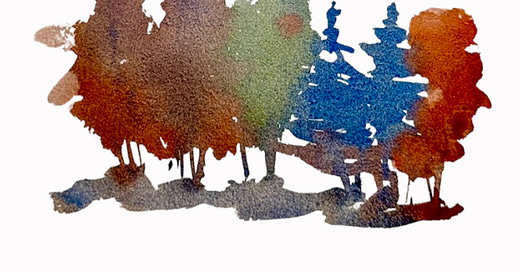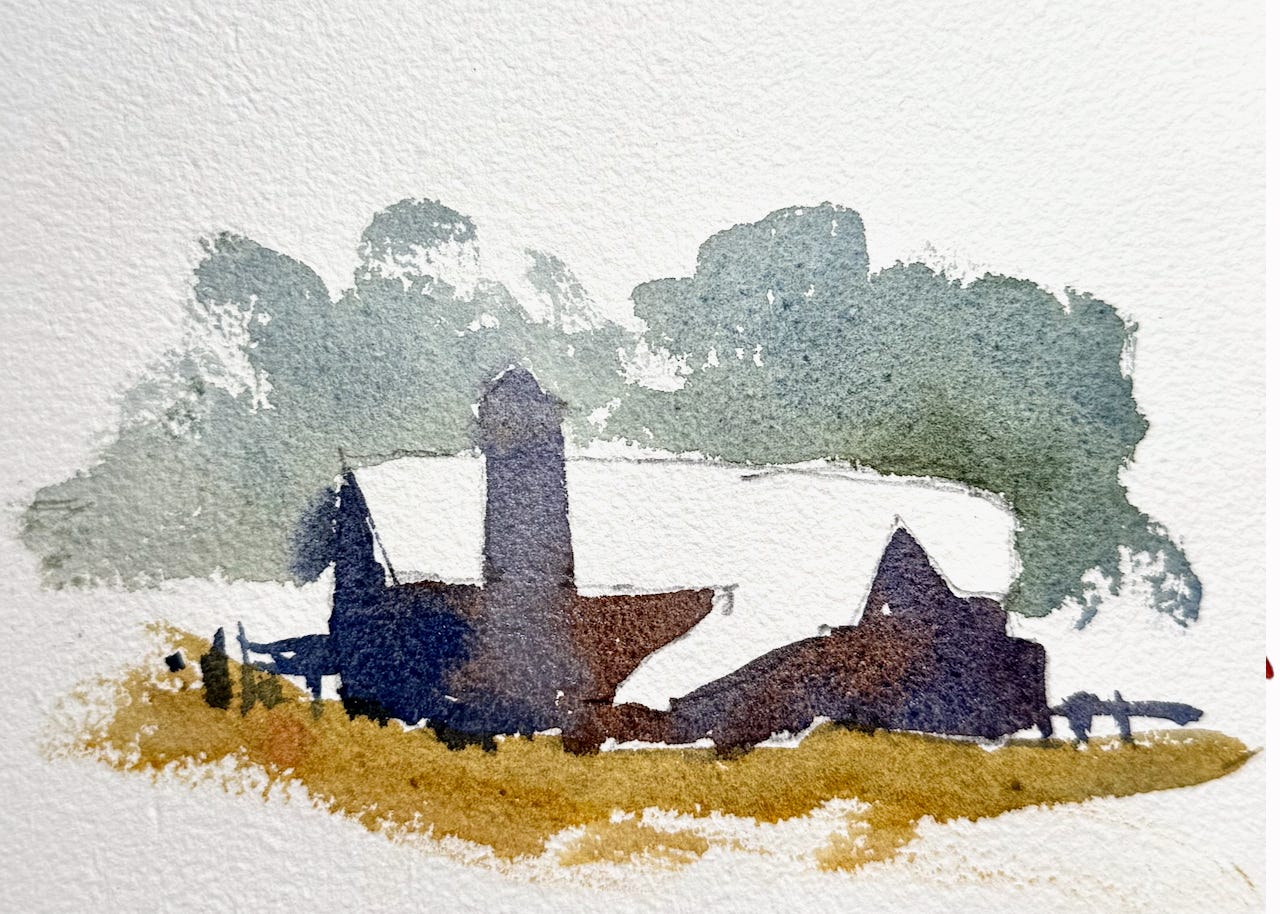Last week, we practiced single shapes and analogous colour transitions. This week, we're leveling up by looking at how shapes connect—painting them as unified forms to create stronger, more cohesive compositions.
Sometimes painting is less about individual objects and more about seeing how they come together as a whole. This week’s exercise challenges you to see large, connected shapes and paint them as a unified wash, letting the colours bleed into one another.
Exercise
Choose a group of shapes: Think fruit on a table (like an apple, pear, and banana) or a cluster of trees.
Draw only the group’s outer contour: No internal lines—just the silhouette.
Paint in a single wash: Use different colours and let them transition naturally across the shape. Allow soft edges to form where the colors meet.
Note: This works best with juicy washes with a good amount of pigment. If the wash is too watery the colours will just run too much.
Why
Train your eye to see compositions as unified shapes rather than isolated elements
Using juicy mixes that maintain their shapes
Explore the beauty of colour transitions and soft edges
Examples
I painted a still life with an apple, pear, and banana as a single connected shape. The colours blend softly, creating unity without sharp boundaries. As a next step I would add some defined dark shadows with hard edges (but that’s not the point of this exercise).
The second demo is a cluster of trees, transitioning through different colours, filling the entire shape with a seamless wash. Hence the title of the post.
And yes, this same idea applies to a group of people (try that as well!)
For paid subscribers:
Video of a 3rd example
Introducing 2 artists that are masters of connected shapes
More ideas you can paint throughout the week
Example 3
In my third example, I painted a barn, keeping the roof as one large white shape and the walls as a connected gradient wash. The simplicity of treating these large areas as unified forms made the composition stronger and more striking.
References
Artists William B. Lawrence and David Millard champion this loose and connected approach, often encouraging painters to prioritise big, connected shapes for bold, cohesive compositions.
Both of these artists have published books I hold dear in my library, and I couldn’t recommend them more:
David Millard’s Joy of Watercolours was one of the first books I ever bought (and didn’t understand for years).
Skip Lawrence’s Painting Light and Shadow should feature in every watercolour aficionado’s library.
More ideas
Mountain Ranges: Treat the entire range as a single shape with soft gradients.
City Skylines: Simplify the skyline into one bold silhouette, letting colors blend for atmosphere.
Flower Clusters: Paint large groups of overlapping blooms as a single wash.




